The Rupununi Rodeo Keeping part of Guyanese culture alive

The RupununiRodeo is scheduled forApril 8 and 9 this year (Photos courtesy of Rupununi Rodeo)
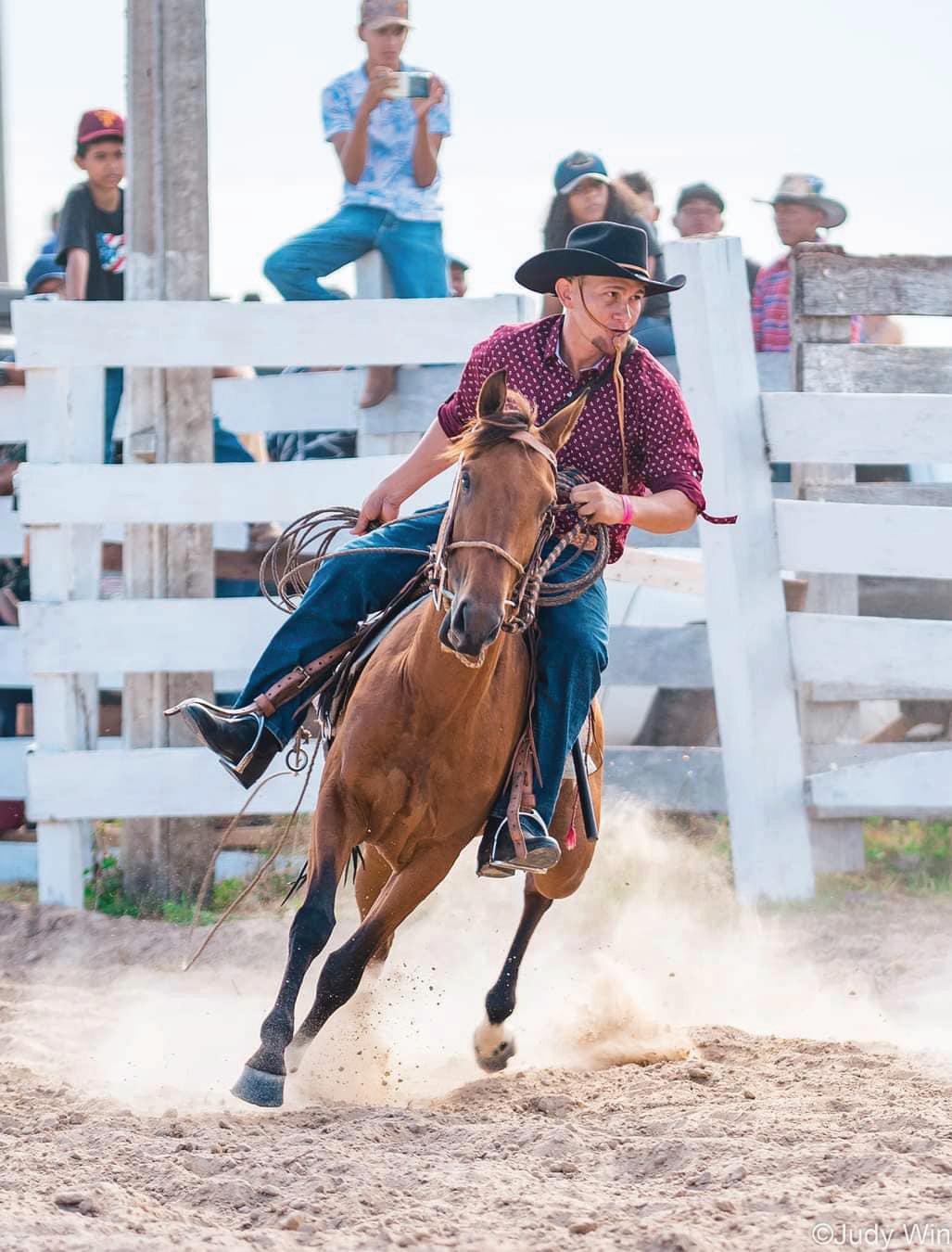


The RupununiRodeo is scheduled forApril 8 and 9 this year (Photos courtesy of Rupununi Rodeo)

“Let your art speak for itself” are the words that can be used to describe the creative endeavours of vibrant artist and entrepreneur Nickeda Charles.
Last week, the Pepperpot Magazine visited the Women in Business Exhibition and Health Fair, which allowed women from all walks of life to showcase their talent. While many talented individuals were at the exhibition, 25-year-old Nickeda Charles grabbed the attention of many with her art.
The young artist revealed in an exclusive interview with this publication that although she
has been honing her craft since 2017 and has taken on a few commissions, this was her first time actively promoting her brand in that way.
When questioned why she decided to participate in the exhibition, Charles admitted that she adored painting and that while working as a freelancer, clients would frequently approach her with challenging requests, which put her to the test, but she was able to execute. So, with the motivating words, “let me go and give it a try” the young artist set forth on a new journey.
The young artist did not
let the fact that the event was in a totally unfamiliar environment discourage her because she had her mother’s support.
At first, she felt slightly anxious, but as people paused to compliment her art pieces, she gradually became more relaxed.
“Beauty is in the eyes of the beholder” perfectly sums up her experience. She further noted that many people adored some of her artwork that she considered being less than her finest. Charles continued, explaining how thrilled she was at the time, stating, “some people didn’t believe that I painted the art myself.”
The art behind the artist Hailing from Mahaicony, East Coast Demerara, Charles moved with her family to Diamond, East Bank Demerara, when she was just 12 years old. The young painter expressed that she had been influ -


enced by her surroundings.
Charles also added that she originally began drawing because she lacked access to the necessary painting tools. However, after doing some research, she was able to locate stores that sold painting materials. The young artist also mentioned that she began watching YouTube painting tutorials before exploring the subject further to discover her true calling.
SEE PAGE XXII


RIDERS and cow boys from Saddle Mountain and
roundup at Pirara, that a friendly competition was
a more organised and structured rodeo became apparent
other remote locations in the Rupununi will begin leaving their homes around Wednesday with their animals, sleeping and resting at various spots along the way as they journey to Central Lethem for Rodeo 2023 on April 8 and 9.

Rodeo has always been a big deal for folks in the Region Nine communities ever since it got started in the early 1960s when ranchers would get together to do a big roundup once a year, assisting each other in identifying, branding and separating their personal herds from other ranch herds.
It was from this system of ‘self-help,’ starting south of the Kanukus towards the central and northern ranches and ending in a final big
born. Not too long after, as the ‘60s progressed,the rodeo became an organised event and moved to Stock Farm in St. Ignatius.
The event continued to gain popularity with neighbouring Brazilian ranchers and cowboys joining in for a chance at the title of ‘Rodeo King’, even as the beauties of the Rupununi participated in pageants for the‘Rodeo Queen’ title.

The rodeo remained at Stock Farm until the Rupununi Development Company (RDC) gave the Rupununi Livestock Producers Association (RLPA) land in Tabatinga. Here, organisers began to set up basic infrastructure for the rodeo. Even as the event was held without any sponsorship, the need for
as the number of persons attending grew.
Today, the much-antici-
important duties, Kenyon and her family are like the scores of other Rupununi families
SEE PAGE IV
pated and well-loved event, having garnered national attention and support, is being organised by the Rodeo Committee, which is a sub-committee of the RLPA.
Vice President of RLPA Michelle Kenyon spoke to Pepperpot Magazine recently about the event. This year, her plate is full as she will be heavily involved in the organisation of things. Responsible for getting the bar together, along with other

eagerly looking forward to the event.
In a heartfelt comment, she said: “It [the rodeo]maintains this connection that we have to each other, showcasing a part of the Rupununi culture that we hope will always be alive; I think that by having rodeo every year, we are contributing to keeping this part of our way of life alive.”
Residents of the Rupununi really get to enjoy the
It causes a “big excitement” in the Rupununi and people are often sad when it’s over, having been able to meet and enjoy the company of friends they haven’t seen in a long time.
As for the ranches, bikers, and cowboys, they have an altogether different experience of the rodeo. “Riders from Saddle Mountain would be leaving on Wednesday.


FROM PAGE III

They are bringing out the horses and bulls, sleeping at different spots along the way and then arriving on Thursday so that the animals would rest. So their rodeo starts months before when they start to prepare the animals,” Kenyon shared.
Even as the rodeo is generally about riding animals (bull riding, bareback bronc and saddle bronc), there are also other activities like calf roping, wild cow milking, the barrel race, horse racing, watermelon eating competition, dirt bike racing, tug of war, dance off on country music, a rodeo pageant, and prizes for best-dressed adults and children.
For years, the rodeo committee worked on a voluntary basis, but this year, the members and others helping will be given a well-deserved stipend owing to the amount of work that is involved in organising the event.

Thanks to such efforts, the rodeo is more popular than ever today,with riders from the Rupununi, Brazil, England, America and other destinations. However, there remains a need for land and funding security to ensure a bright future for the rodeo,which is a growing attraction to the Tourism industry.

THE Guyana Society for the Prevention of Cruelty to Animals (GSPCA) is a non-profit organisation that has been in existence for more than 100 years.

This organisation was formed with a focus on seeing animals protected and cared for.
According to a document sent by the organisation, since 2000, the GSPCA has become a vibrant and active part of the community, championing the rights of animals in many forms, but not without the help of many volunteers who embody the spirit upon which the Society was founded.
Today, the GSPCA continues to be committed to providing low-cost health care to pet owners, educating the public on responsible care and treatment of pets, providing shelter to unwanted animals, providing humane euthanasia to injured and sick animals both within and outside the clinic and advocating for spaying and neutering to control the pet population and reduce instance of unwanted animals being strayed.
Services

The GSCPA now offers the following services to the general populace: low-cost spaying/neutering, vaccination and de-worming treatment of minor injury/illness, re-homing/ adoption services, animal cruelty investigations and boarding.
The document explained that the GSPCA receives an annual subvention from the Government through the Ministry of Agriculture to the tune of $723,000.


GSPCA’s other sources of income would include basic services administered at the clinic and shelter fundraising activities, along with donation boxes placed at various locations.
The Formation of GSPCA
The Guyana Society for the Prevention of Cruelty to Animals was known as the British Guiana Society for the Prevention of Cruelty to Animals. It was established in 1903 by a group of expatriate volunteers after witnessing the everyday ill-treatment and suffering experienced by animals in
the streets of Georgetown and other areas of Guyana. These early animal rights crusaders had no building to operate from, so their work was carried out from their homes.
In 1953, mainly through the efforts of Mrs. Jean Wilson, assisted by her husband, who was an architect, the first building to house the BGSPCA’s Animal Clinic was erected. Following Guyana’s independence in 1966, the name was changed to The Guyana Society for the Prevention of Cruelty to Animals or GSPCA, as it is more familiarly known.
On the heels of Mrs. Wilson’s work, Mrs. Elsie Taylor steadfastly and tirelessly recruited volunteers. Her optimism and dedication paid off as, in 1992, a group of animal lovers with a desire to see animals protected and cared for accepted the positions to serve as GSPCA volunteers
and eventually committee members of the GSPCA. By now, the Society was formally registered under Guyana’s Friendly Societies Act (Cap 36:04) and following the stipulations of these regulations, including holding regular Annual General Meetings (AGMs) and having audited financial statements.
In the year 2000, a new and modern building replaced the old clinic building. The newly-constructed clinic is equipped with animal boarding facilities, a surgical room, two treatment rooms, and a recovery room. There are also shelter facilities where animals awaiting adoption are housed in a waiting area and an office. The Animal Clinic and Shelter also has a fairly large yard area for exercise purposes for the animals.
Last week the Pepperpot Magazine visited two of the 365 islands in the Essequibo River to highlight the locals’ way of life.
The first island the team visited was Whitputush which is about a 20-minute boat drive from Fort Island with a 40 horsepower engine and boat.
At first glance, it seems abandoned and uninhibited, but a closer look reveals a wooden cottage which staffers of the farm occupy. It is a coconut estate and a farm of fruits and other plants.
There is a small makeshift landing to moor boats and a rickety wooden landing is in place but it is steep and it takes you on to the shores ofWhitputush Island.
On the outside, passing the island looks overrun with bushes but when you
get there on the island it is well-cultivated into a coconut estate and fruit farm.


The island itself is about two miles long and it is a place that is often flooded whenever there is a spring tide. As such, the crops would perish.
The farm is maintained by workers from neighbouring islands in the Essequibo River and at times, the workers would spend a night or two overlooking the operations.
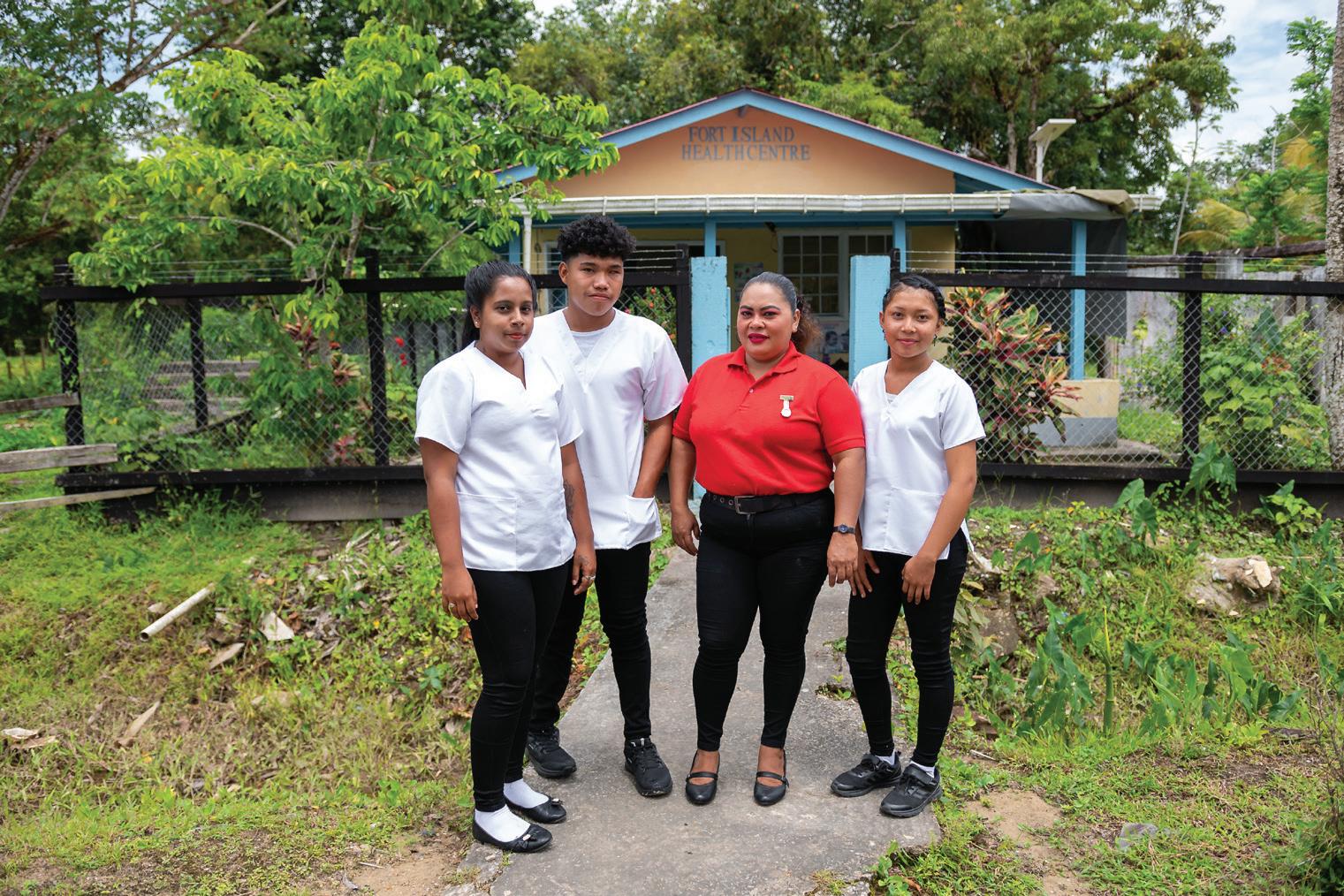

There is accommodation in a wooden cottage where they usually cook and sleep and there is also an outdoor shed the workers would use to shade and have lunch not far from the cottage.
On Whitputush Island, there is a cultivation of coconuts: 18 months, three and five years. Sweet figs, guava,
plantains, soursop, cherries are also planted on a large scale.
The farmer in charge of the crops is Surendra Teehal, who is from Quarter Benabo, Essequibo Island. He works side by side with two other workers on the farm.
The 24-year-old told the Pepperpot Magazine that he has been working on the farm since its inception five years ago and he would plant the crops and ensure all is well on the island.
Teehal reported that a typical day for him starts early. He would leave home by 07:00hrs by boat to get to the farm to work alone with five other men.
He stated that collectively they would weed and do whatever is necessary to preserve the cultivation. They would try to leave the island
by 16:00hrs daily and working on weekends is optional.

In addition, Teehal explained that he also rears some cows with his father on the island they reside,
Quarter Benabo, also in the Essequibo River.
Growing up on an island leads to a simple way of life, Teehal said and he likes the simplicity it brings because there is enough space to do many things, but his hobby is playing cricket on the beach of any island for recreation.
He comes from a family of four brothers and a sister and they are from a generation of farmers who have lived their entire life on an island in the Essequibo River.

At a young age, they learned to cultivate crops, drive a boat, build boats with ether father, rear cops and do other things necessary for a good life.
On the island he resides, Quarter Benabo, there are only a few neighbours. His immediate neighbour is his
brother. His grandmother also lived nearby but shepassed away a month ago. His only sister got married and lives at Diamond, East Bank Demerara and she is the mother of a baby boy, and they would talk to her almost every day.
“Riverine life is hard, but you must be able to do more than one job to be successful in life because there are no permanent jobs around here, so it is only farming, fishing or rearing livestock and cattle,” he said.
On their island, they would have constant flooding during the spring tide, and they had to do a lot of sea defence, but they also need a sea dam and some internal drains on the island itself to prevent excess inundation.
boat drive away.
“I love farming, utilise the land to grow crops to secure food security has been a part of my family for generations and me and my brothers are all farmers, keeping the tradition alive,” he said.
Teehal has been working on the farm for about six years and he finds the work rewarding because there is enough land to do large-scale farming.
The farmer stated that they hadn’t had a good harvest in some time due to heavy rainfall and flooding, but he is hopeful they will see bountiful reaping soon.
That day when the team visited, only three farmers had showed up for work and taken a lunch break, having completed some weeding and tending of the crops of fruit trees, coconuts and ground provisions.
 By Michel Outridge
By Michel Outridge
IN giving a historical background of Fort and Whitputush Islands, Essequibo River, Mahendra Mookram told the Pepperpot Magazine that back in the Dutch days in the 17th century, Fort Island and Whitputush Island were one huge island until the siblings who owned them had a falling out.
It was reported that the elder brother was a quiet, withdrawn individual while, the younger sibling was often angry and outspoken and after Fort Zeelandia was built on Fort Island, the little brother (Gravesande) took the lower part of the island while, the other brother was left with the other section.
The brothers then divided the island into two parts; a canal was dug to determine the boundary, and that canal was dug by man labour during slavery.
Over time, the brothers settled in their sections of the two islands and made life for themselves.
The islands later became deserted after the war in the 17th century. Years later, they were subsequently used by locals of Morashee, Bonasika and other islands to farm and most of their children attended Fort Island School.
Mookram told the Pepperpot Magazine that many people left the islands seeking higher education for the children and could no longer maintain their farms due to
high tides (climate change).
This move caused the islands to become abandoned for some time once again, and after 14 years, Mookram, well known as “Uncle Joe” bought Whitputush Island and began farming after he had invested in preparing the land for large scale cultivation.
“The land had to be empoldered, a trench was dug, the sea defence was boosted and a dam was made for two self-acting kokers to drain the land whenever the tide is high,” he said.
Mookram reported that they had done a lot of land clearing and preparation before he could plant any crops. He has been providing steady employment for locals of the riverine communities since.
Dexter Caesar, the excavator operator
Meanwhile, Dexter Caesar, who is employed with Mahendra Mookram told the Pepperpot Magazine that he has been working with Uncle Joe for the past eight years.

The 53-year-old stated that he works on the farms for land preparation for cultivation and is from Look Out Village, east Bank Essequibo.
The father of four added that he is getting steady work and working for Uncle
Joe has been good so far.
“Visiting these riverine islands for work is a fre -
“This is a nice place because no one is here permanently and we visit daily for work. We can cook and take a rest without fear. Being a farmer is part of our life,” he said.
quent thing and I like what I do for work and there aren’t any complaints. Right now we are trying to build some sea dams to reduce flooding on the farms,” he said.
That day, he went on a tour to inspect with Uncle Joe and visited Baboon Hole Island, Essequibo River.
Kishan Teehal, the farm worker
The Pepperpot Magazine also spoke to Kishan Teehal, a farmer who works on Uncle Joe’s farm at Whitputush Island, Essequibo River.

The 22-year-old reported that he is from Quarter Benabo, another island in the Essequibo River and it is owned by his family, who are the only residents, and it is located about a 20-minute

Venita Jetoo is a mother of three. She is a resident of Baboon Hole Island, Essequibo River and for the past three years, she has been living a simple life of farming.
She is originally from Lanaballi, Essequibo River but relocated to Baboon Hole Island three years ago to live and work.
Jetoo, her husband and three children reside on a section of farmlands owned
by operators of M&M Snackette, the provider of local cuisine and fruit juices.
The 36-year-old reported that she would do all the household chores and cooking while her husband tends to the farm.
Meanwhile, Khusial Goordial told the Pepperpot Magazine that he has been working on the farm for the past three years and so far, it is a steady job, and he doesn’t
have to travel anywhere to go to work since it is right at home.
He related that he is from Bheri Bessibali, also in the Essequibo River and is accustomed to the simple way of life, which entails hard labour.
Goordial stated that the best time to work is before sunrise when the place is cool. He would do some farming, do a walkabout during the day, and do odd jobs on the farm.
The farmer noted that
the riverine life is good once there is permanent work to bring in an income and the school boat would take his children to and from school on weekdays and he is grateful for that.
He pointed out that owning a boat and engine as a riverine resident is vital and added that since the implementation of the school boat system, it has provided great ease for him regarding cost.
Goordial explained that with riverine life, nothing is a bother until the spring tide comes and it would destroy the crops, so drainage and irrigation are essential to upkeep the produce.
The 50-year-old stated that he is comfortable in his humble abode and even though they don’t have much, they enjoy peace and tranquility with their hammocks under trees by the riverside and get a lot of fresh air and space to cultivate crops.
His home and yard are well put together including, the two outdoor firesides, one by the river and the other under their house.
They have their clothesline just by the riverside and things seem to be all in order and they have that air of contentment away from a thickly populated village.
Baboon Hole Island is one of those places you wish you can stay a bit longer to sit and look at the seemingly calm glossy river and take a pause while, enjoying the natural beauty of the environment, which is so green and lovely.

Another resident of the said island is Trevlyn Sookram, a native of Moruca, North West District, Region One (Barima-Waini) who basically moved away from place of birth at age 12 years old to seek a better life.
The 28-year-old told the Pepperpot Magazine that she and her spouse would utilise the Essequibo River to catch fish in their little boat, after which they would process the fish and set it out to be sun-dried.

They would then sell the salted fish to wholesale buyers that would visit Hubu Koker, Parika where it is a central point for offloading goods due to the upgraded stelling which the current administration undertook.
Sookram said it is their way of earning since employment is rare in that part of the country.

Today, her parents reside at Lanaballi, Essequibo River, a riverine community close to Bartica and they are farmers.
Sookram is from a family of four sisters and three brothers who have been farmers all their lives.
The mother of two stated that river life is not easy because it entails a lot of hard work and it is very costly to reside and they travel great distances to make a good catch of fish.
“Life here isn’t really easy, but you have to do a lot to be successful at earning but this kind of life is very peaceful and stressfree,” she said.
Anata Jaganan grew up at Windsor Forest, West Coast Demerara, and her family later relocated to Aliki, a riverine village in the Essequibo River, where they had a farm.
The 58-year-old told the Pepperpot Magazine that she grew up really hard, working on the farm at a young age and they also catch fish. As an elder child, she was tasked with caring for her siblings while her parents worked on the farm.
Jaganan reported that on June 23, 2023, she will be celebrating her 59th birth anniversary and she is looking forward to it.
The elder stated that riverine life is hard and they used to fetch the produce for miles from the back dam to the river and load it in the boat, after which they would take it to the market to be sold.
The mother of three added that these days, thanks to her children, she is taking things easy and she spends
more time at her daughter’s house in Tuschen, East Bank Essequibo.
When the team visited, she was at another daughter’s house at Baboon Hole Island to spend a few days.
Jaganan disclosed that she has a cataract in one eye which requires surgery and she is awaiting a date for that since they already had a surgical operation for the other eye.
The elder is considered the matriarch of her family and she is gifted in olden ways like “setting a belly” for women who have difficulties conceiving and she even delivered a few babies even though she has no formal medical training.
She considers her skills to be inbred and has been practicing for many years, but she eased up on doing that kind of thing due to ill health.
Jaganan told the Pepperpot Magazine that she delivered her eldest daughter’s baby, her own grandchild, in a boat on the river and she can do many things.
“I love the river life, it is
very simple, modest living, but you have enough to get by and there is land to plant and you can catch fish for the pot and it is a stress-free life which is also safe,” she said.

Jaganan has six grandchildren and two great-grandchildren.
Even though she has di-
(Delano Williams photo)
start all over again,” he said. Goordial stated that as a riverine resident, they don’t have a lot of opportunities and they only way of earning is farming and they must do it despite many challenges, the biggest being flooding, high cost of farming materials among other things.
The farmer added that
framing is viable once there is a healthy harvest, but with climate change, it has been difficult for some time to achieve any real profit.
Goordial disclosed that riverine residents are hardworking people who utilised the islands in the Essequibo River to farm and earn.

He pointed out that they would use English island,
Fort Island, Worm Hole Island and the other surrounding islands to cultivate crops and rear livestock.
Goordial told the Pepperpot Magazine that it doesn’t matter where you live but it has a lot to do how you choose to live and what you do to become gainfully employed.
abetes, she would still do things around the home to be occupied and she likes a clean and tidy home and surroundings and it was evident that day when the team visited.
The team also met Vishal Goordial, a farmer who works at Whitputush Island, Essequibo River and resides with his family at Baboon Hole Island.
The 21-year-old told the Pepperpot Magazine that there are about 20 residents on Baboon Hole Island, most of whom are farmers.
He related that he is originally from Lanaballi but settled on the island about three years ago.
“Farming is manual labour and it is hard work, day after day hoping for a good production of crops but at times the weather is bad and the entire cultivation is flooded and there is a great loss, but life goes on, we have to
MahendraMookram, better known as “Uncle Joe” is a simple man who goes around feeding stray cats, a habit he picked up while, visiting his farms in the Essequibo River.

At his home, it is no different every morning. At the crack of dawn, about six
stray cats would be waiting for him, to be fed and he would before he starts his day.
Mookram is the co-owner of M&M Snackette and has been farming for a long time in his home village of Canal #1, West Bank Demerara. He later relocated his farming to Baboon Hole Island and Whitputush Island, Essequi-
bo River.
The businessman and farmer told the Pepperpot Magazine that he started farming because of ‘supply and demand’ issues and to provide wholesome, organic foods at his six restaurants nationwide.
Mookram explained that he has adopted the back-forward integration process at
his farm at Whitputush Island, where he has a coconut estate and fruit cultivation.
At Baboon Hole island, also known as Bonasika Main, he has a dairy farm along with some sheep and he used to have ducks, but his stock has to be replenished since he uses about three sheep per week and about 20 ducks for the week.
Mookram added that he had a farm of more than 300 ducks and he is hoping to achieve that once again to keep his supply and demand in order.
The businessman stated that he produces a lot of fresh cow’s milk, but his problem is the transportation of the milk. As such, he hopes the Del Cante Road, which will run from Parika to Goshen, will provide relief for riverine farmers and add to the “Farm to Market” concept.
“As is, there is nothing I can do with the cow’s milk now but with cheap energy, I can process it to produce milk-based products rather than just using it for the food
business alone,” he said.
He added that they are sourcing solar lights for Whitputush Island and soon he can buy milk from the locals in the riverine communities to make ice cream and milk punch, among other things, for his snackettes.
Mookram reported that he is trying to improve the breed of his cows and has sold off most of his herd, leaving only 35.
He stated that he will upgrade the mud pen to a concrete structure for better accommodation for the cows and aims to rear 200 cows.
The businessman added that he also plans to cultivate his own feeding grass for the cows and is looking at two varieties, including antelope
and giant king grass.
Mookram reported that he has a quarter acre of antelope grass and believes he can multiply from that in the near future.
Meanwhile, on Baboon Hole Island, he has crops of vegetables, fruits and coconuts and he has separated his livestock from his crops and at times, a cow or two would getaway and eat all the bora.
Mookram disclosed that due to the economic change, he is concentrating on largescale farming to be competitive, but the rains have taken a toll on the crops for the past three years straight.
He revealed that they have seen better weather for
SEE PAGE XI


FROM PAGE X
the past three months and the cultivation has recovered somewhat.
The businessman added that he is seeking the assistance of NDIA to have a sea dam and some internal drains for his farms at both Whitputush and Baboon Hole Islands.

Mookram reported that as is he needs support for drainage and irrigation works to be implemented on his farms.
He disclosed that the government assisted him with the construction of two self-draining kokers and fertilizers at his farm at Whitputush Island, Essequibo River.

He envisions a phased development concept from farm to table in three forms which are to be prepared in raw form, looks at pre-cooking foods for three to five minutes and when energy is affordable, he will seek to go into frozen foods production.
Mookram reported that he is rearing some black giant chickens in Canal #1 Polder and he has some that has grown to 18 pounds per bird.
The businessman added that he was motivated into food security via framing due to supply, demand and pricing. He is looking at providing 80 percent of foods for his business, including fruit juices.
Mookram and his brother co-own the six M&M Snackettes at Diamond, Grove, Peter’s Hall, Houston, Pouderoyen and Pritipaul Singh Investment (PSI).
He explained that the family-owned business started more than 30 years ago from a push cart small business.
The businessman told the Pepperpot Magazine that with the six snackettes, he provides direct employment for 98 persons, including Amerindians from Region One and he also provides housing and training.

Mookram noted that in the farming aspect, he has six full-
time staffers and when he has a harvest he would employ an additional 12 persons on the two farms for reaping and land preparation.
He stated that he takes care of his staff and one, who came from Region One has been with him for the past 15 years and is in training to take his place in the business.
Mookram is also looking to create a heritage site more like an eco-lodge with a farm-to-harvest nature tour with a fruit/coconut estate walk for overnight visitors on Fort Island.
He is willing to partner with the current administration to make the project a reality.

WORLD Health Day is celebrated every year on April 7 to commemorate the founding of the World Health Organiza-

tion (WHO) and raise awareness about various health issues world -
SEE PAGE XIII


wide. Over the years, the focus of World Health Day has shifted to address different health challenges and emerging trends.
In recent years, the world has witnessed a growing interest in preventive health, which involves taking measures to prevent diseases from occurring. The increasing burden of chronic diseases such as diabetes, cardiovascular diseases, and cancer has driven this trend. These diseases are often caused by lifestyle factors such as unhealthy diet, lack of physical activity, smoking, and excessive alcohol consumption.
As a result, World Health Day has increasingly focused on promoting healthy lifestyle habits such as eating a balanced diet, engaging in regular physical activity, and avoiding harmful substances like tobacco and alcohol. Governments, non-governmental organisations, and public health agencies have been working together to create policies and programmes that encourage people to adopt healthy behaviours.
Another important trend in World Health Day is the increasing emphasis on mental health. Mental health issues such as depression, anxi -
ety, and stress are becoming more common worldwide, and they significantly impact individuals, families, and communities. World Health Day has been instrumental in raising awareness about mental health issues and reducing their stigma.
The Environmental Protection Agency is dedicated to ensuring that its workforce has access to the best resources for preventing and managing such issues. This commitment is reflected in several initiatives, including establishing a Health and Safety Committee, appointing a new Human Resource
Director, and creating an Emergency Response Team with well-defined Standard Operating Procedures (SOPs). Furthermore, the Agency has taken direct action to address mental health concerns by promoting the development of recreational spaces and clubs, such as yoga, scrabble, dominoes, cricket, and football. In addition, the Agency frequently organises blood drive events

FROM PAGE XII
to encourage staff to become blood donors, which is a healthy practice with significant benefits.
Further, in fulfilling its mandate of protecting human health and the health of the natural environment, the EPA continues to monitor operations to ensure good air and water quality and investigate complaints of incidents which pose a danger to human health.
You can share your ideas and questions by sending letters to: “Our Earth, Our Environment”, C/O Communications Department, Environmental Protection Agency, Ganges Street, Sophia, Georgetown, or email us at: eit.epaguyana@gmail. com. Follow us on Facebook and Instagram and subscribe to our YouTube channel.


LIVING through your ideas and skills has rules that must be followed with strict awareness of what are the dark realities in our world. Recently, an intellectual property rights case was concluded in our courts; all of the individuals are known to me. There’s an assumption that since we don’t have copyright laws, procedures of ownership can be ignored when it comes to matters that go beyond purchasing a car, or a house, or a piece of land. Where a receipt is exchanged for a purchase in your name, in most cases with IPR issues, ignorance prevails towards devastation.
Well, everything is just not really inside of our usual Guyanese habit of assuming what it is, and what it’s not. The reality is how you do things is crucial in the world of ideas. When an idea takes shape in a flash of realisation, or, for want of a better term, a surge of inspiration, how we deal with it must be controlled by a brisk tug, with a whisper imploring you to “manage this idea”. At times we do feel the euphoria to discuss a dream thing with ‘friends’. In fact, not all the so-called friends can be trusted with secrets, and in the legal world, where the ownership of ideas is concerned, your narrative of your idea between friends lies in the public domain. This means that anyone can appropriate and covet it, because, at the gaff level, it’s intangible. It becomes tangible when you put your idea, quietly, in writing, and send it to yourself as a registered mail, or go through the Herculean task of writing and building the book, illustrating the jewellery designs, doing the sketches for the children’s book, raising the funds to employ a professional artist to perform a ‘work-for-hire’ performance contract to capture your ideas.

I am not sure if the Commercial Registry can file something like your manuscript or sketches, but they should. Avoid institutions that tell you to send your unprotected ideas with promises, because, to see your work stolen can ‘trip’ your mind, at times permanently, from the normalcy you were born with.
Take this reference, in July 2019 in Japan, Shinji Aoba set fire to the KYOTO animation studio. This fire claimed 33 lives, all in their 20s and 30s; 22 women and 14 men. KyoAni artists are known for their creative work. Shinji was arrested, but claimed that the studio had plagiarised a novel of his. There were allegations that he was mad; was in medical care for mental health, and had a criminal record. But there was no direct evidence that his allegation was a fantasy, because, when the studio burned, with it was lost all the digital and other intellectual records.
An editor’s note of News, concluded, “It goes without saying that arson and murder are no solution to the idea of theft. However, assuming that initial reports of Aoba’s motives are correct, it goes to show how passionately creators of intellectual property feel about their works.”
The most brutal intellectual property exploitation arena is the music industry. Contracts are complex and compelling documents; it’s far from humour with the saying that ‘contracts can be the Devil’s covenant’. Before the contract should be a Memorandum of Understanding (MOU) that indicates intent, then the contract.

I’m no lawyer, but I had to learn from the beginnings of my career as a writer and artist to understand the priorities of survival in the enterprise area that nature had endowed

MARISSA was somewhat surprised at herself for thinking that way because Aditya’s grief and his son’s trauma had touched her. She knew he was simply showing appreciation for her care and patience in working with the child.
“I guess because he’s so darn good-looking; others would see things differently,” she alluded to herself. “So I’ll just leave that there.”
Her weekend began busy as always with many personal tasks she had to do which were quite tiring. That Saturday evening when she was just thinking of relaxing with a glass of wine and watching a movie, her friends called. They wanted to pick her up for cocktails at Kosmos in Movietowne. She was tired and didn’t feel like going out but on second thought she realised it was also a way of
relaxing.
The cocktail bar and lounge was almost filled and they took a table outside so they can sit in the ambience of the attractive night scenes and cool breeze blowing in from the Atlantic. They sipped their favourite cocktails, enjoying the appetising finger foods, chatting and laughing lightly at humourous things said.
“It’s the life,” Cindy
said with a sigh of satisfaction, “after five days of hard work.”
“It sure is,” Marissa and Shivanie agreed.
The girls touched glasses and a few moments later, Cindy announced in a dramatic low tone, “Hey, it’s the grieving widower.”
Marissa turned to look and saw Aditya being seated three tables away with a young man and two fashion-
people you don’t know,” Shivanie chimed in.
“Well, that’s me,” Marissa smiled, raising her almost empty glass.
“Oh, we need to order another round.”
smiled and said, “Enjoy your evening,” and returned to his table.
Shivanie and Cindy looked at Marissa, saying teasingly, “Well, well.”

able young ladies. He was smiling and looked quite happy.
“Well, hello,” Shivanie exclaimed in a low tone.
Though she was surprised, Marissa stated, “He does have to live his life. It would give him some reprieve from the pain of his loss until he can put it behind him.”
“What are you, a psychologist now?” Cindy asked with a little laugh.

“No, but I read a lot so I understand some things of the human mind.”
“And added to that the compassion you feel for
Cindy looked around to signal the waitress who had served them and said hushedly, “Don’t look, he’s coming our way.”
Marissa turned to look at him when he greeted them.
“Hello ladies, nice evening out?”
“Yes,” Cindy and Shivanie answered at the same time.

“That’s good,” and looking at Marissa, he said with an admiring smile, “You’re looking quite lovely.”
She smiled graciously, “Thank you.”
The waitress arrived the same time and he said to her, “Whatever these ladies are having, it’s on me.”
Before any of the girls could say anything, he
“Listen,” Marissa said in a cautionary tone, “The two of you don’t start with that again.”
The evening wore on, not too late and though Marissa tried her utmost not to look his way, a strange urge made her do and each time his eyes met hers. It caused a warm, fuzzy feeling to pulse through her being and she took deep breaths, to keep it from her thoughts.
When they were ready to leave, he returned to their table and enquired if they had a ride home.
“Yes, we do,” Marissa said, “Thank you.”
“It was nice seeing you tonight,” he paused then added, “out of school.”
“SLEEPING Beauty” was always one of my favourite childhood princesses. Can you imagine how she must have felt after waking up from a 100-year-old sleep? I am sure most of us have been cranky or unproductive during the day because we didn’t have a good night’s rest, whether intentionally or not. Good sleep is such an important part of your nightly routine to function effectively. You may not know how important it is, but your body certainly knows of it. It is said that most adults need at least seven hours of sleep at night. Children, however, need more hours in their schedule. An internal “body clock” within us works on a 24 hour periodic cycle. As the day progresses, you will tend to feel more tired until bedtime. When natural light disappears in the evening/night, our bodies release melatonin. It’s a hormone that helps us to feel sleepy or drowsy. As the sun rises and natural light returns, our body will start to release the cortisol hormone, which helps us feel energised and alert. I must admit, the science behind sleep is pretty
cool to read about.



Sleep is important, but getting enough sleep is the key to effectiveness and good health. Taking a “quick nap” in the evenings or sleeping for only 2-4 hours because you went to bed late is not healthy for you or your body. It’s not even healthy if it’s just a one-off instance. You should always allow your body to get its seven hours of deserved rest. Our bodies are so complex that they work long and hard during the day. It makes sense that we give it some rest so it can work the next day effectively. A lack of sleep can leave you with mood swings, decreased cognitive functions or a delay in reaction to events or things that are happening in your environment. You aren’t your best self when you lack sleep because your body depends so much on it. If you neglect your body’s need for sleep, you can eventually develop a tolerance for sleep deprivation. You may not be alerted that it’s negatively impacting your body—but your mind and body are yet still impacted. There’s a misconception about this once people start to feel like this after neglecting their sleep. They
may say, “oh, my body no longer needs seven hours of sleep”. You not “feeling sleepy” or not being aware doesn’t mean your body does not need sleep.
My advice to you is to always follow a strict sleeping schedule. Don’t try to pack the day’s work into the night—you’ll regret it in the morning. You can invest in a comfortable sleep environment by finding pillows, sheets, blankets, pillowcases or mattresses that feel great to you for your sleep. If by chance, you feel as though you don’t burn enough energy during the day then try exercising during the day—it can help you prepare for sleep. Set the temperature and light to your liking. Personally, I simply cannot sleep without a fan on and hate when it’s humid or hot around bedtime. Most importantly, you should try to stay away from your phone or any device in your bedroom. They can distract you from sleep and disrupt you from a good night’s rest.
She laughed a little and left with her friends. Somehow she found herself looking forward to seeing him in the morning, but on Monday morning he did not bring Aryan to school. His niece did but he came for him in the afternoon.
“I’m sorry for my absence from school this morning.”
“You’re excused,” she said, humouring him.
“So how’s my little scholar doing?”
“Much improvement,” she answered, “He’s quite a smart kid.”
“That’s really good to hear.”
Marissa finished putting her desk in order as they spoke and she was getting ready to leave when he asked a little hesitantly, “Can I talk with you a little while more?”
“Sure.”
She sat down and motioned him to sit as Aryan played with his toy dinosaur.
“I will have to leave again soon for a short period so operations can run smoothly and to look at ways of shifting some investments closer to home.”


“How soon?”
“In another week.”
“That’s so soon,” she said with a little concern, looking at Aryan, “And he’s doing so good now.”
Aditya sighed, concern also on his face but a glint of hope in his eyes.
“I take comfort in the fact that he has you for those six hours in the day because somehow your care and patience have impacted his mind.”
He paused a little and continued, “Since his mother died, he’s hardly smiled and sits quietly but now he’s laughing, running and playing.”
There was a glint of tears in his eyes that he hurriedly blinked away and Marissa touched again for the child said, “I’m so happy to hear that his mind is opening up to the fun of learning, having friends and ---,”
“And his teacher,” he interrupted her.
She smiled with that signature warmth, “I’m happy when they are.”
He looked at her and surmised, “I’m sure when you go to
FROM PAGE XVI
bed you fall asleep with a little smile on your face.”
“I wouldn’t know,” she laughed gently.
“Well, thank you for the little extra time,” he said, getting up.
“You’re always welcome to talk to me on your child’s progress at school.”
He nodded and took Aryan’s hand to leave but at the door the child turned and ran back, putting his little arms around Marissa’s waist; that took her by surprise.
There was a look of conflicting emotions on Aditya’s face, for a husband who suffered a great loss and a father who wants to see his son have the love and care he misses from his mother.
“That’s what I told you,” he said to Marissa, “There’s something about you that he likes.”
Marissa said nothing for she wasn’t sure what to say. And that night as she closed her eyes to sleep, she wondered, “What role do I play in all of this?”
To be continued…
GREATER inclusion of women in all spheres of planning and development, after centuries of exclusion, is a necessity. With our planet facing exacerbated existential threats and increasing disasters, that need could not be greater.
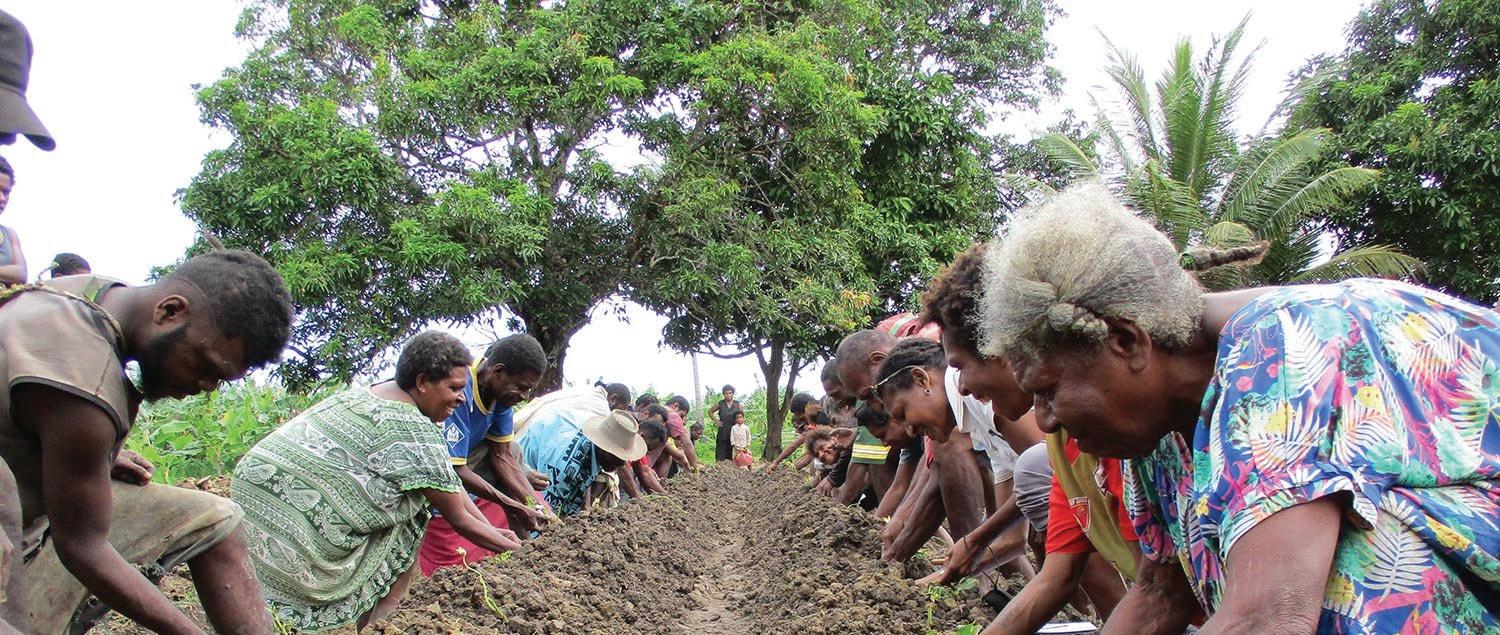
Several days ago, I visited India’s National Disaster Management Authority (NDMA) as part of a one-week journalists’ exchange visit to the South-Asian country. Like many other agencies and organisations in India, I was impressed with the work being done to fuel the country’s development and protect it from various shocks. In this case,
Despite how impressed I was with India’s system, I believe women are involved in disaster preparedness and response efforts locally. And in India, Guyana and elsewhere however,
there remains a tremendous need to incentivise women and women’s involvement in such efforts.
To share your thoughts on this or any other column, please email me at: vish14ragobeer@gmail.com

the NDMA was established to protect India from natural and man-made disasters.
What struck me about the NDMA, however, was its local disaster preparedness structure. It was consistently emphasised that there is no substitute for sound preparedness; no matter how responsive systems and structures are; being prepared helps protect communities.
That being said, a vital part of the Indian/ NDMA structure is integrating women in disaster preparedness and response efforts.
It has been recognised that women in India, many of whom are homemakers, are best suited to lead and manage these efforts because they are the managers of households; this gives them an acute understanding of the needs and expected responsiveness of members of their households. Extrapolate that and entire communities and regions can be mobilised if more women are integrated into this system.

Moreover, the intentional focus on empowering women and leveraging their unique insights and skills is also premised on the reality that women are vulnerable to disasters. It is well-known that disasters disproportionately impact women, children, the elderly, and persons with disabilities. According to Hemachandra et al (2018), in a paper on building resilience for disasters presented at an international conference in Bangkok, Thailand, several factors contribute to limited women’s participation in disaster preparedness and response efforts.
Those factors include fewer women in professional and technical jobs, a patriarchal culture, religious beliefs, household workload, education level, self-interest, policies and legislation, political environment and household income.
But with more women involved, it is believed that government responsiveness and effectiveness will be improved. This, Hemachandra et al (2018) posited, will help to achieve inclusive development and democratic governance that helps in improving trust and confidence in government institutions and increasing sustainability and responsiveness of public policies. It is also expected that including more women allows their interests and needs to be better represented.
India’s model, I believe, helps to address some of these factors. So, the involvement of women in disaster preparedness and response efforts is reasonable and appropriate because it means those most affected are empowered to craft solutions for their needs.
Naturally, though, this also spotlighted the value of the unpaid role of a woman in the household, whether in India, the Caribbean or elsewhere. Training, ideally, would be provided to women, but consideration must also be directed towards incentivising and compensating women for their

THE governmental authorities are acutely aware of the dangers of the Resource Curse or the Dutch Disease, which could easily afflict new oil-producing countries like Guyana and are taking measures to guard against it by developing traditional, as well as new sectors of the economy. These will be sustained and continue to grow long after oil resources have diminished or have been exhausted. Agri-


culture has historically been the main industry of Guyana and accordingly, focus is directed toward developing this industry.
As an income-generating entity, the coconut industry was introduced by indentured Indian immigrants in the same way as the rice industry. Coconuts were widely used in various forms, for example, in chokes, metemgee, cookies, biscuits,
various confections, and coconut milk. They were used by ordinary folks to produce the oil they required for cooking and other purposes and industrially, to produce refined cooking oil that met the local market’s needs with some exported to the Caribbean. The main companies which produced refined coconut oil were Wieting and Richter and Resaul Maraj and Co.
SEE PAGE XXI

FROM PAGE XX
In the 1970s, Guyana experienced an economic depression which led to the collapse of the economy and the emigration of a large percentage of the population and the coconut industry was ruined. The industrial oil producers closed their doors, the coconut estates became neglected, and the cooking oil needs were barely met by home production. When the economy was revived several years later, foreign imported oils had completely replaced local oil.
In the last two years, the Ministry was fortunate to have Mr. Zulfikar Mustapha as Minister of Agriculture and with great proactivity and creativity, he embarked upon the beginnings of an agricultural revolution. New methodologies were introduced, former crops like rice had greater production and sugar began a revival. Large scale training was undertaken and new crops like millet, wheat, corn, and soya were introduced. Fish farms were started and livestock was enhanced with the introduction of improved breeds. The coconut industry early engaged Minister Mustapha’s attention. Even though the industry has become fairly prosperous, it still has not satisfied local demand.
The industry has a five-year development plan to be executed under the auspices of NAREI which enjoys the support of the Caribbean Agricultural and Development Institute (CARDI) and the Agriculture Sector Development Unit of the Ministry, which has the cooperation of the Inter-American Development Bank (IDB). At present, there are 2000 coconut farmers and it was expected to increase acreage by 1000 acres per year, but this figure has been revised and would be three or four times more. Efforts are being made to improve the industry’s seed stock and 2000 Brazilian Dwarf Coconut seedlings have been acquired from the Brazilian Scientific Seed Nut Institute (COHIBRA) and will be tested and observed by NAREI at plots at NAREI and Hope Coconut Industries Limited. This Brazilian variety is superior to Guyana’s traditional variety in that its water volume is 750 ml as against 500 ml for the local variety and is better suited for oil and copra production. In addition to Brazil, Government is making efforts to source other suitable varieties from Mexico and some of the countries of Asia.

Coconut Oil production has been increasing, especially in the Pomeroon area and a good quality exportable product is available at a competitive price. Indeed, over the last several years, the reputation of coconut oil as a healthy and desirable oil has grown exponentially and it is often bracketed in the league with olive oil. It has the prospect of a profitable export market.
The coconut plant has a large number of uses and the technologies to exploit that are not expensive. For example, in Asia, coconuts are used to produce a very popular slightly alcoholic drink known as toddy and the Ministry has already acquired a coconut fibre machine and is now producing coconut fibre which normally went to waste. Such fibre could be used in upholstery, pot scrubbers and in plant nurseries. Coconut production is now being dovetailed into the Caribbean Food self sufficiency plan.
FROM PAGE II
Among other things, she and her family did not have certain privileges growing up in the countryside, but this inspired the young painter to take the time to observe the world around her. Thus, she was able to put paint on canvas and depict her point of view on life by drawing inspiration from her home and some from old movies.
One of Charles’ paintings, which has a deeper significance, depicts a young girl with tears streaming down her cheeks and a mask tightly covering her face. She said, “when COVID hit, we believed that was the end of everything.”
The painting sprung from her noticing a little girl in her church weeping because she was tired of wearing a
mask but had no choice. The young artist said that while she consoled the girl, she also captured the sorrowful moment by drawing an oasis of hope in a bleak situation.
She then discussed some of her artistic influences. The young artist displayed a few artworks at the exhibition that showed musicians in action; she claimed that her love for music inspired this.
In addition to being surrounded by musicians growing up, she explained that music is “another way for me to escape and connect with good vibes.” Charles also noted that she frequently illustrates older bands in her work because they do not attract as much notice as before.
The rising star further explained that there are not ample opportunities in Guyana for inspiring artists, so she hopes to open her own art school.

FROM PAGE XV
me with. I prayed and spoke to the Kingdom of God within me. Without humour, I was directed by encounters to read more and to recognise how I, too, can be a victim through trade books and related experiences from other creative and talented people.
Just as I’m outlining what I’ve learnt, so was I advised by more experienced persons. While working in training with the late Dr. Denis Williams, I learnt a lot about the business of the arts and humanities, especially knowing that it is important to know how to balance and manage your content.

In closing, we all need inspiration from the Internet, magazines and old pictures, but the safest models are the models you recruit. They cost money. Beware of smart language you find in old books; don’t think that you can use it because you assume that everyone who read it is now dead. Remember that plagiarised content is always a no-no when you don’t use it as a quotation, and state the author’s name as reference but rather as yours. At all costs, avoid the burden of being discredited. It doesn’t go away easily; it can become as old people seh, ‘a Dokku pon yuh back’.
















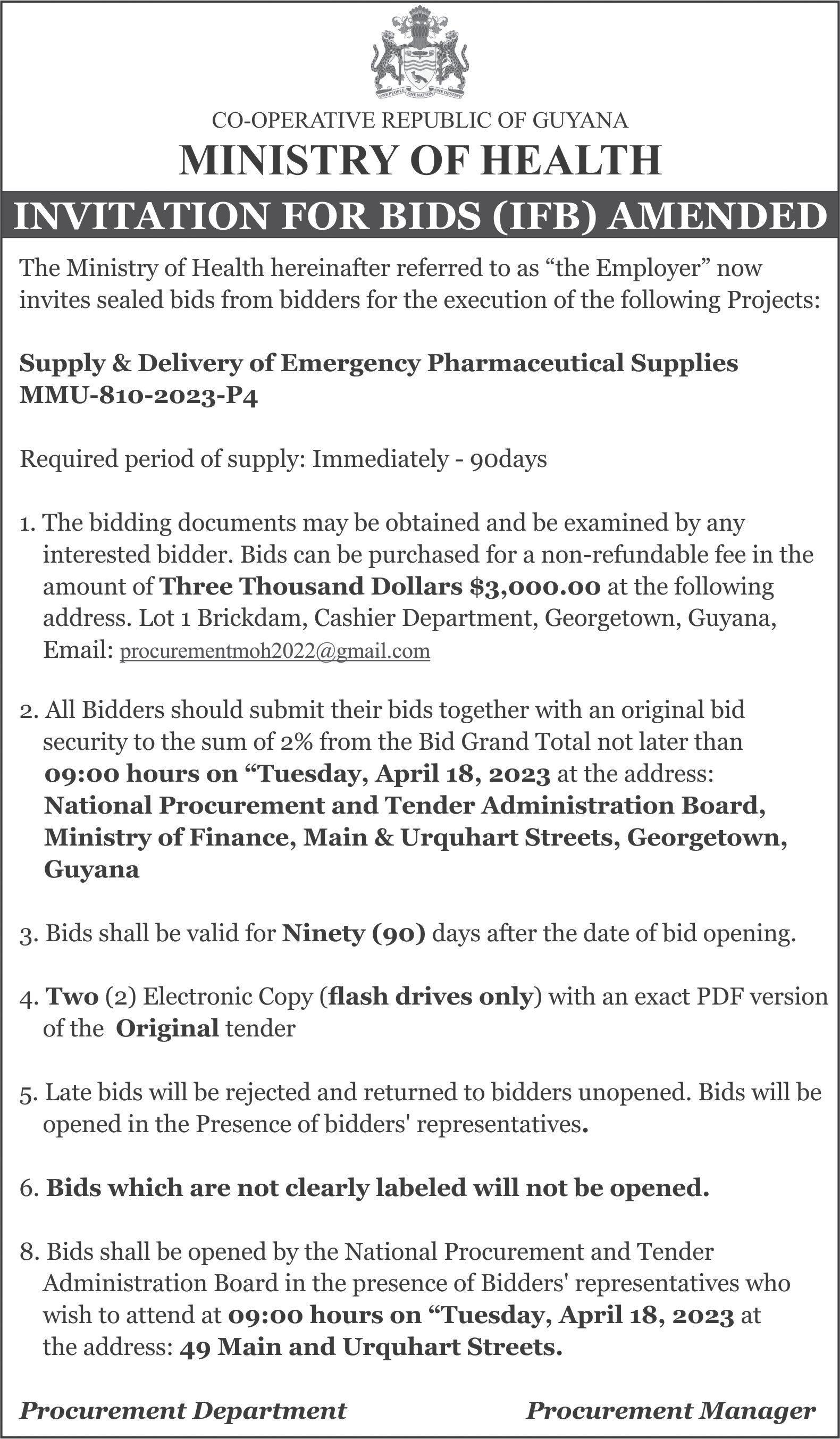















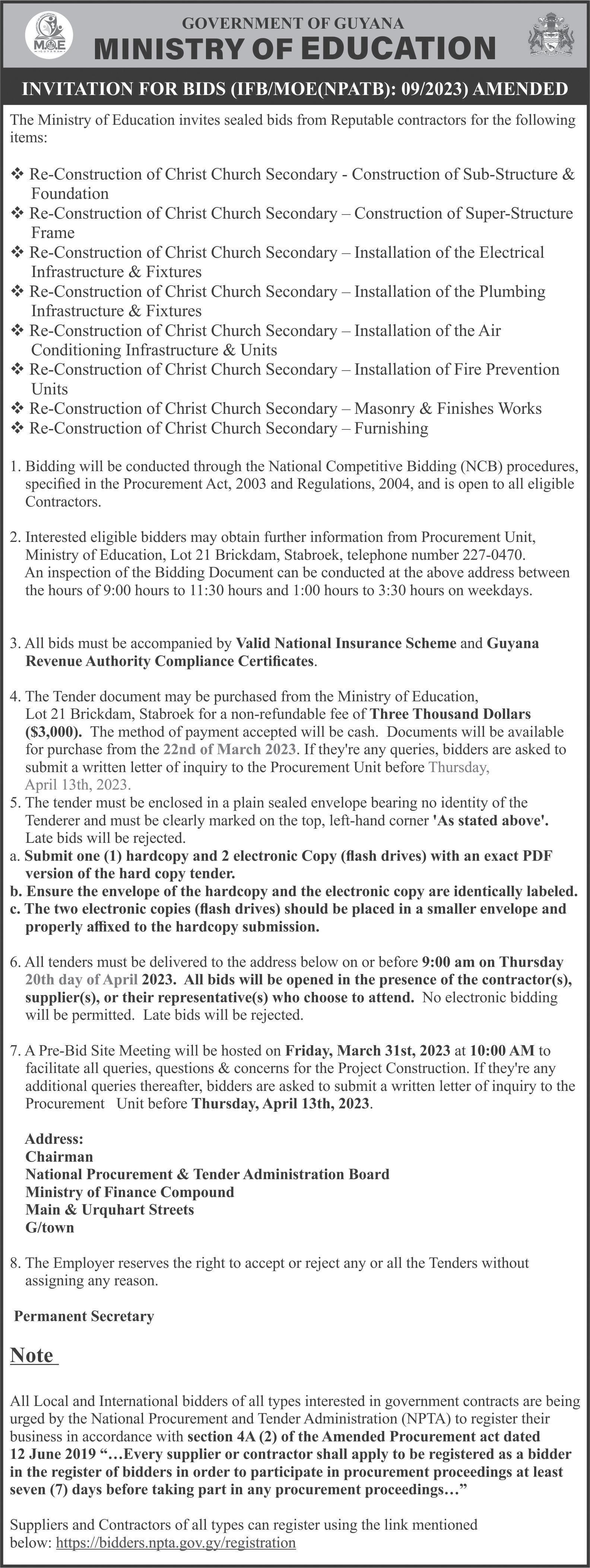














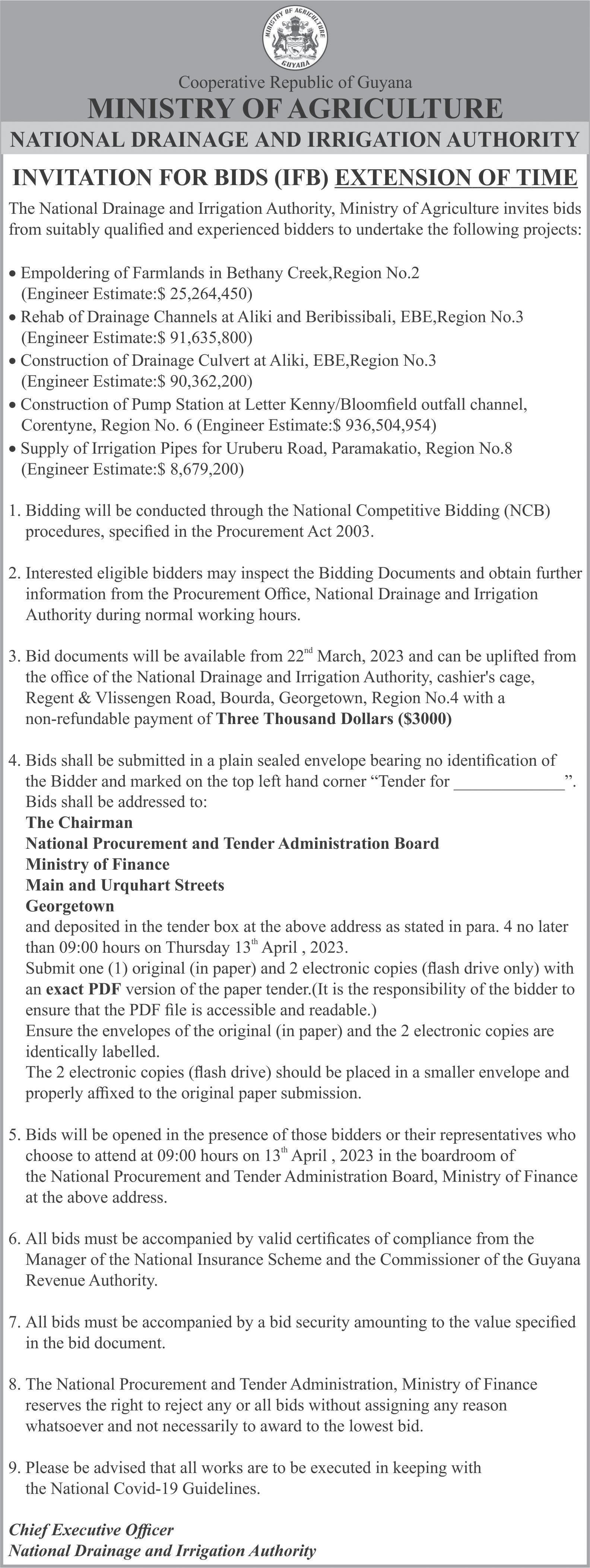




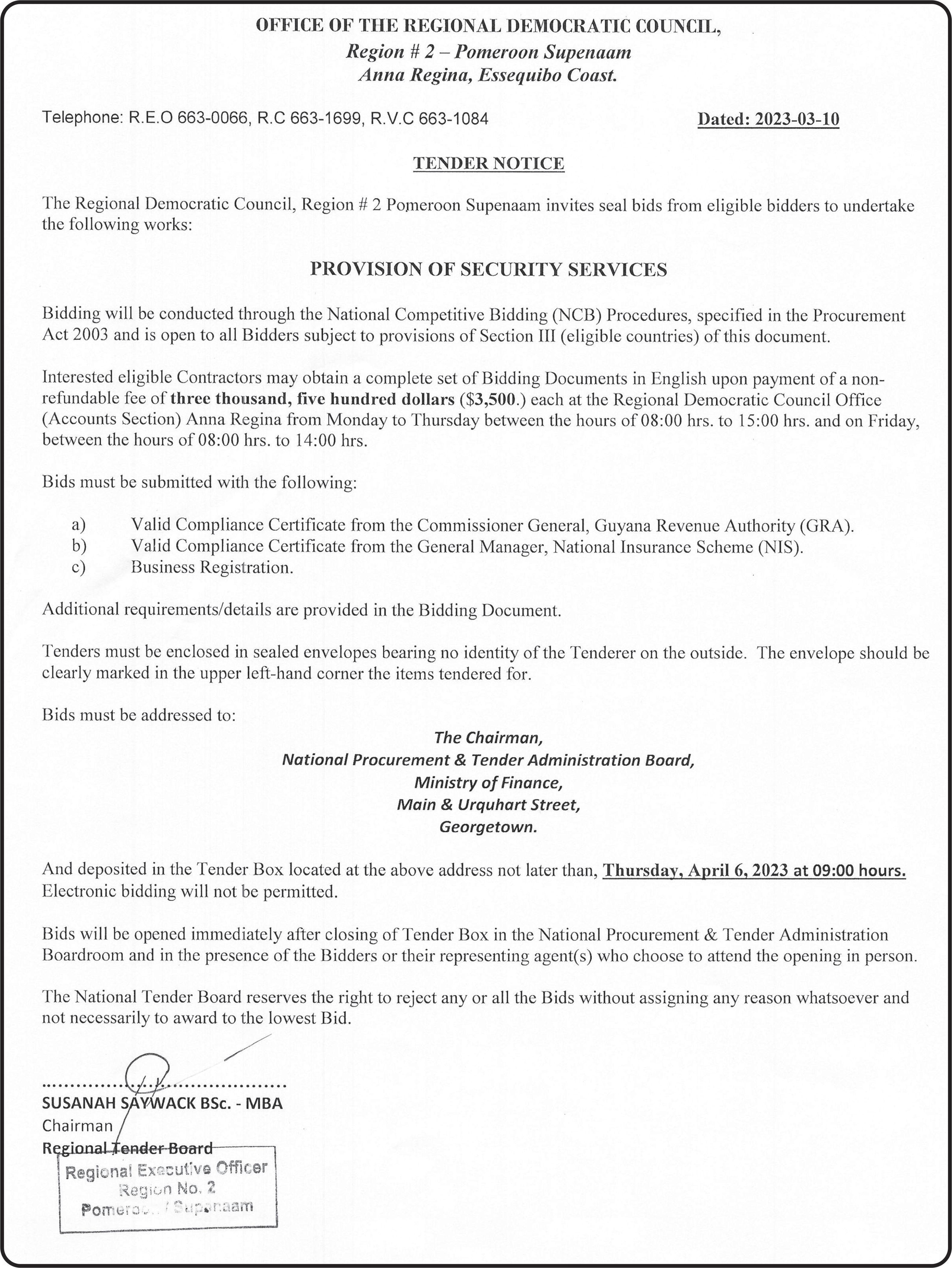


It is nought good a slepyng hound to wake.
GEOFFREY CHAUCER (1340?-1400)
Troilus and Criseyde, iii, 1.764
Dear Student, Welcome dear friend. Although speaking and writing differ in many ways, the collecting and organising of ideas is the same. Look back upon how you prepared such speeches as reports on a class
April 02, 2023
subject, demonstrations in classes and clubs, reports to the student council, and other special reports. Remember how you observed that speeches differ as much as the personalities who made them. Remember the impromptu, extempore, read from a manuscript, and memorised speeches. They were so challenging!

Love you.
IMPROVING PUNCTUATION
Accurate use of the quotation marks (‘ ’) (‘ ”)
Before we go on today, let us remind you to study the definite rules for punctuation given each week until you really understand how to apply them.
NOTE: Punctuation marks may be divided into four classes. (1) The externals are those marks used chiefly to end sentences: the period or full stop, the question mark, and the exclamation mark. (2) The internals are those marks used within sentences: the comma, the semi-colon, and the colon. (3) The marks that occur in pairs: quotation marks, parentheses, brackets, and dashes. (Dashes may also be used singly.) (4) The special marks are those that occur within a word: the apostrophe and the hyphen.

When credit is being given to the original speaker or writer of an expression, you enclose his words within quotation marks (‘ ’) (“ ”). It is a common practice for either the single or double forms be used depending upon the style of publisher, company, or writer. Just be consistent with usage. In addition, quotation marks have other related uses. [Look out for them next issue.]
Generally, when a sentence ends with a quotation, always place the end stop within the quotation marks.
Look at some mustknow uses of quotation marks:
1. The tailor said, “These are the latest in pajamas for young men.” (Direct quotation unbroken by explanatory words.)
2. At the meeting, Mrs. Danby said: “Develop a brochure for all our customers. We will send it to them with their charges. This new brochure …” (Direct quotation longer than one
sentence, use a colon instead of a comma.)
3. “We’ve reached Philp’s Landing already!” the captain shouted exultantly. “By four o’clock we’ll have reached the wedding house!” (Direct quotation broken by explanatory words. An extra set of quotation marks are used.)
4. Thomas said, “I heard my mother shout, ‘Put down your father’s gold watch, Johnny!’” (Enclose in single quotation marks a quotation within a quotation.)
5. In conversation, begin a paragraph for each change of speaker.
“I’m sorry to be late,” said Meg. “Have you been waiting long?”
“Oh, no,” replied Eve, “only about an hour. Sometimes you keep me waiting much longer.”
6. If a direct quotation consists of more than one paragraph, place quotation marks before each paragraph but at the end of the last only.
“Read a lot. Then, when you want to use words that you have read, attempt to visualize them. Try to recall what they looked like when you say them in print.
“Think hard about spelling. You know which words you find difficult to spell. Pinpoint where you go wrong in the words that you misspell. Concentrate on your errors in a methodical way. You will soon find that you are making fewer mistakes.”
Something to Do
Look at the following sentences. Supply quotation marks where they are needed. Exchange work with study partners for checking.
1. If you wish, said the gardener, I’ll bring up some tomatoes and ochroes as soon as I reap them.
2. I should like to become a teacher trainer, Gregory announced.
3. Did she use the phrase in all my born days?
4. The crowd chanted, Hold that line! And then let out a long sigh as the opponents scored another touchdown.
5. When I am tired, announced the grandmother, I rest. That’s the sensible thing to do.
THE PASSAGE
Improving paragraph writing
Note: A well-planned paragraph consists of thoughtful and disciplined expression. The aspect of subject matter is stated in a topic sentence at the beginning. All other sentences clearly bear out or support that point. They explain and develop it excluding irrelevant matters.
Passage: The difficulties of watching an animal of nocturnal and secretive habits are great. Even now much of the badger’s life remains a mystery. How can we tell what happens in the labyrinth of dark tunnels that constitute his home, known to us as the badger’s set? We know that he makes only rare appearances by day; that he retires to his set at dawn, and emerges at dusk. Since badgers are very much awake by night, we presume that most of their time underground is spent in sleep. We know that they have large retiring chambers into which they take cartloads of bedding comprised of the most handy material, dry grass, bracken, leaves, herbage of different kinds; anything that is within convenient distance of the set and will make a comfortable bed.
(Eileen A. Soper, When Badgers Wake)1. Where is the topic sentence found in this paragraph? State what the main topics are in it. How many are they?
2. List what points are made by the writer to support each topic.
3. Can you tell what will happen if the writer were to come off being ‘tight’ in his writing?
4. Have you ever allowed your thoughts to stray at any time when writing or speaking? What was the reaction of your audience or reader?
5. Construct a paragraph of about 100 words on a feature of your kitchen garden.
6. Construct another paragraph of about 130 words with a topic sentence containing multiple topics. Allow your study partner to check on it.
SUCCESSFUL treatment in the healing arts is not attributed exclusively to administering an appropriate remedy. Once there is person-to-person interaction, a certain degree of understanding must prevail. In the case of the dentist-patient relationship, the concept of success after treatment should be balanced when both parties have systematically analysed the result.
Discussing the dentist-patient relationship must begin with one singular but critical observation. There is an unfortunate tendency in the dental literature to assume that there is only one kind of dentist-patient relationship. Such a conceptualisation has limited the kinds of research carried out and compromised or limited the relevance of the findings which have been reported.
The fact is that there are three types of relationships which vary according to the relative amounts of responsibility required of the dentist and patient. The importance of being aware of these explains the doubts about whether there is any guarantee of dental work done by the dentist.

In one model, the dentist assumes complete responsibility for caring for the patient. In its most extreme form, the patient is incapable of reacting, that is, he or she is unconscious or in a coma, etc. The second type of relationship is that of the guidance cooperation model; the dentist gives advice, direction or instructions and the patient is expected to carry them out. This type of relationship is probably the most traditional and most familiar one. The third type of relationship is mutual participation. In this model, both dentist and patient share equally. The patient is expected to take responsibility for his welfare and promote his health. Only here can he engage in preventative and health-promoting behaviours or in adherence to prescribed regimens for controlling chronic disease.
Studies have described the “good patient” as obedient, conforming and willing to assume the role of the patient. According to researcher E.F. Borgotta, the degree to which the patient poses little risk of threat to the professional, and the extent to which he readily conforms, defines the patient in positive terms. In addition, individuals characterised as “good patients” are described as agreeable, likeable, warm and attractive according to T.A.Wills writing in the psychological bulletin (1999).
The psychiatric and social work literature has demonstrated that the professional’s first impression of the patient in terms of the dimensions discussed above significantly affects the treatment outcome. Patients who are cooperative and behave well tend to get the better of the dentist. In fact, studies show that the professional image of the patient on the first visit is significantly related to treatment outcome.

The findings of Horning and Massagli (2001) indicate that as professionals become more specialised, there appears to be an increased emphasis on the negative characteristics of the patient and the tendency to label them as the negative persons who exaggerate small ailments and who are headstrong. It is conceivable that patients who challenge professional integrity tend to receive labels that place them outside of the professional’s area of expertise or define them as untreatable.
A survey done about a decade ago in the USA reported that for dentists, the ideal patient were females between 25-55, well-educated and at the upper end of the social scale. This aspect further proved the physical appearance dimension concerning treatment. Also, almost half the dentists surveyed had lost patients due to poor interpersonal relationships. On the other hand, patients believe that critical factors of a good dentist include his personality, ability to reduce fear and anxiety, and technical ability.
